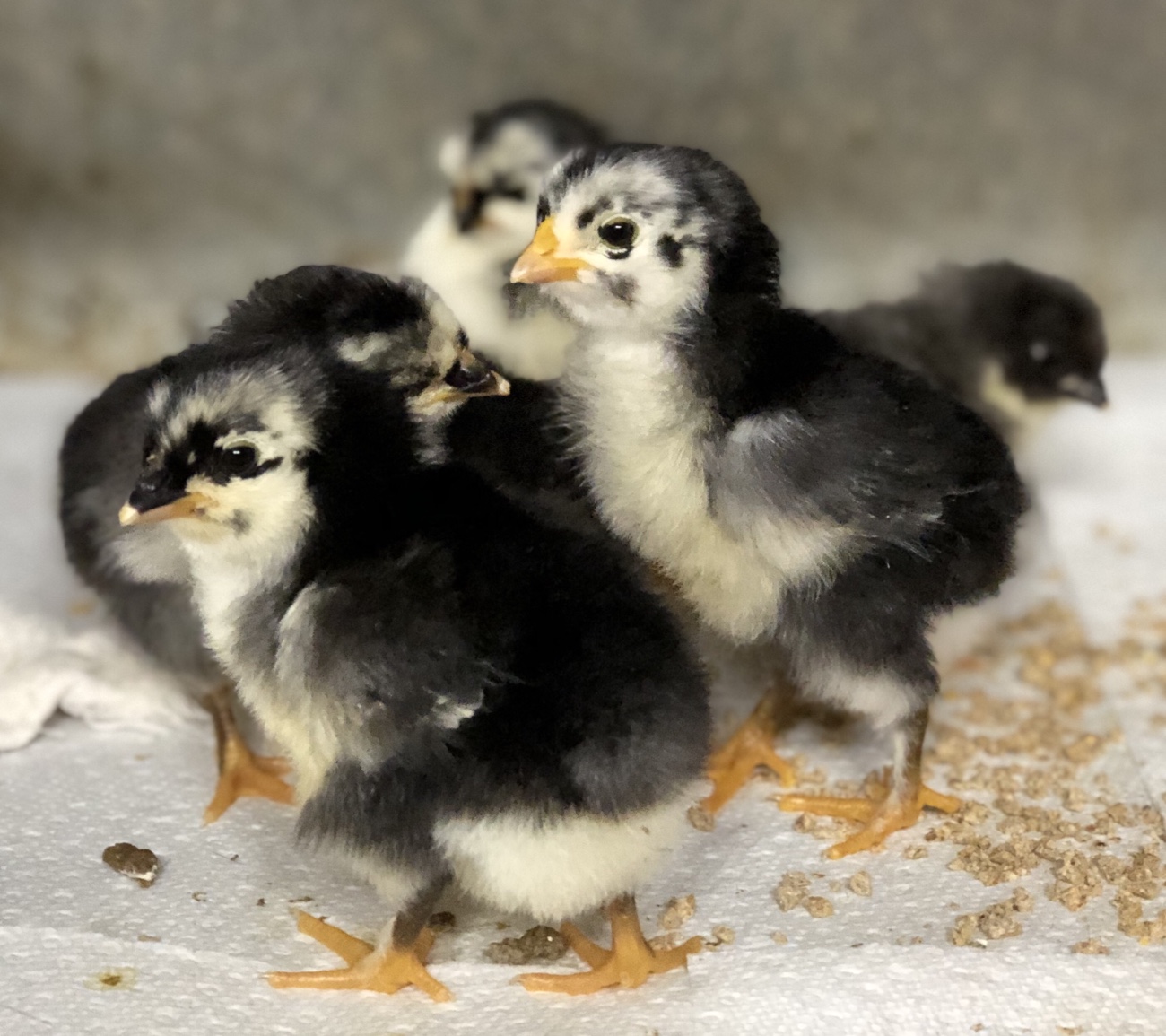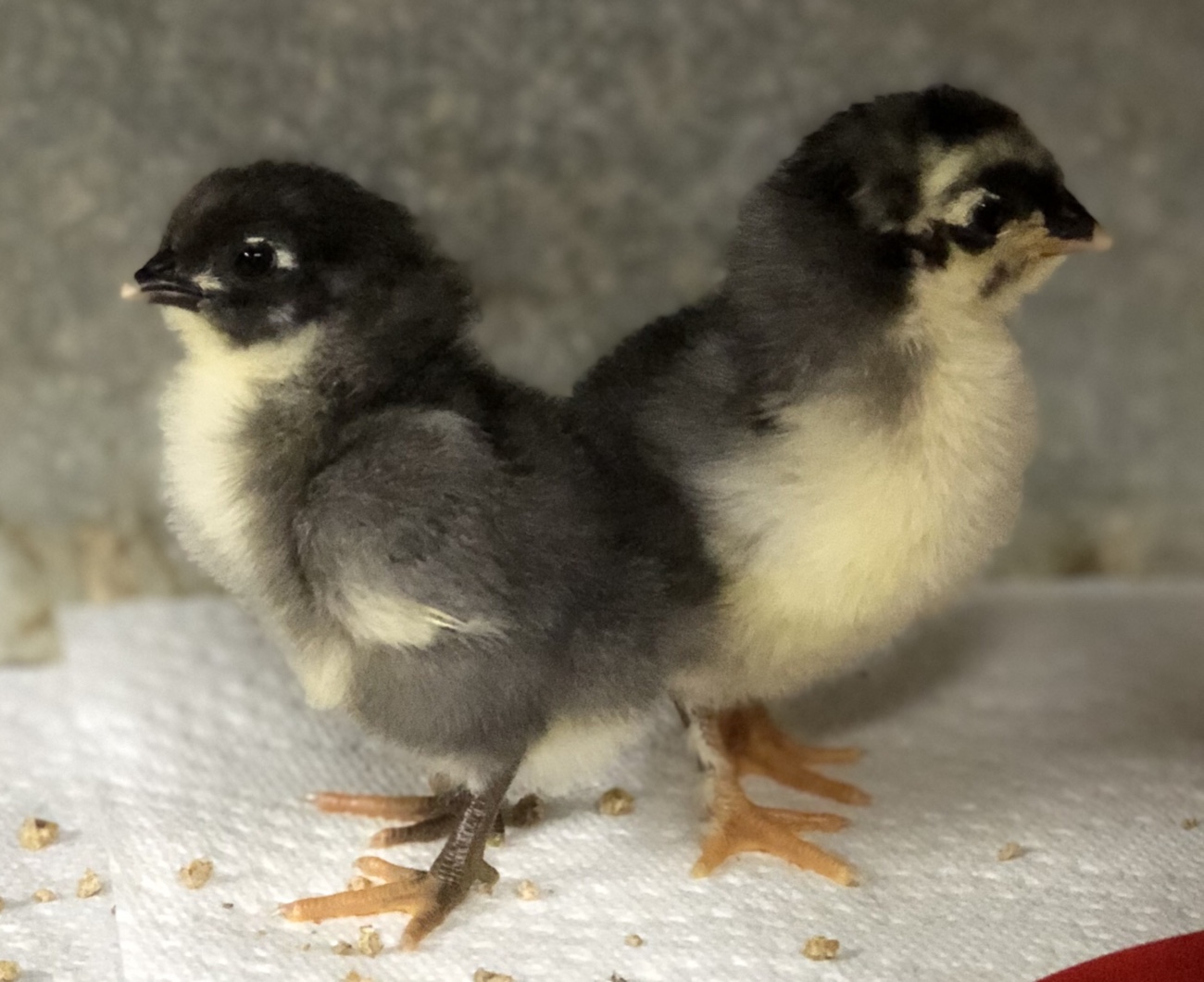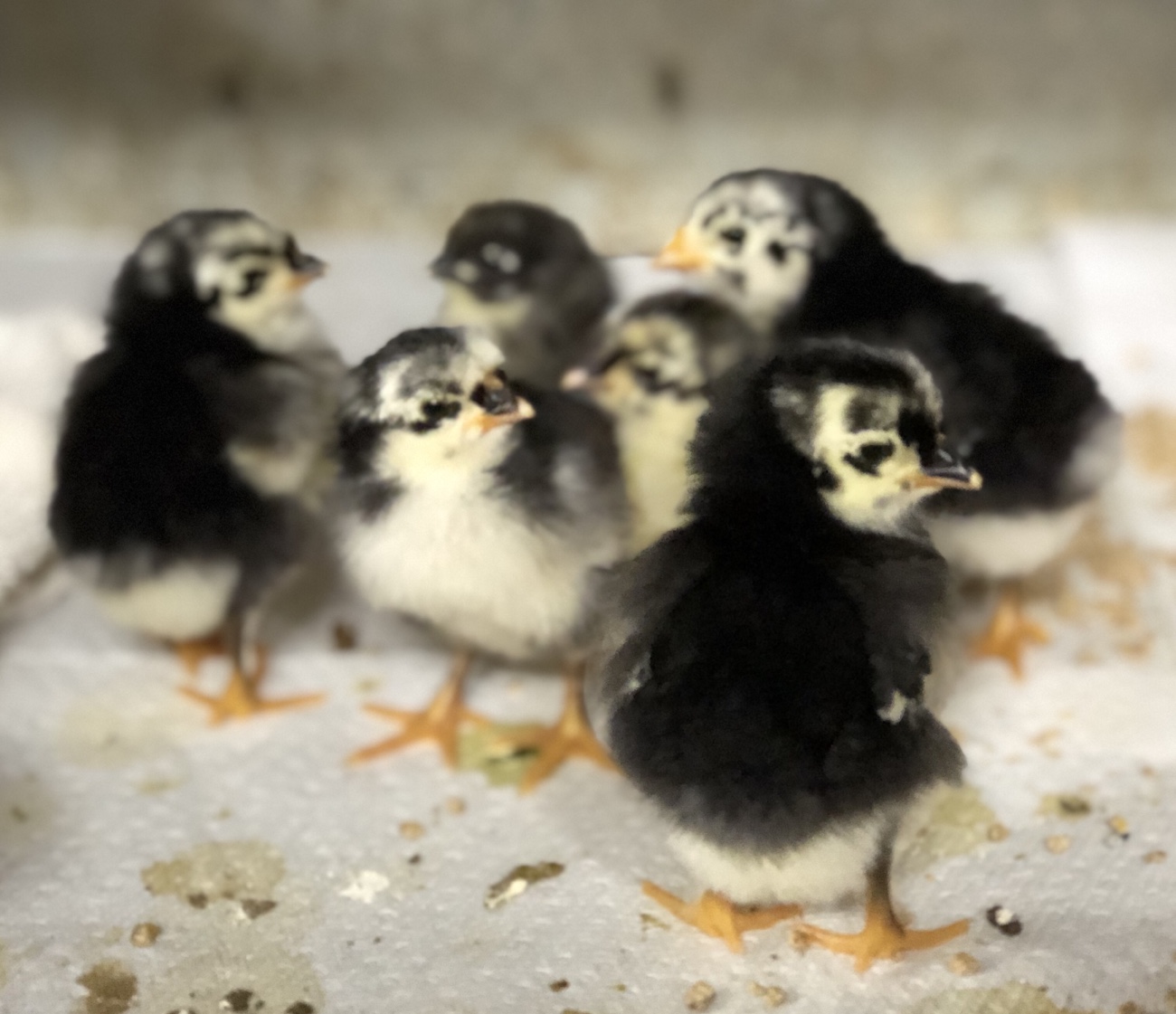
Another hatch is over, and there are six tiny chicks in the brooder. All hatched without assistance, and all are Olive Eggers…except one!
Ever since I first bought Swedish Isbar (now called Silverudd’s Blue) hatching eggs last spring, I’d hoped for that one would turn out to be a blue pullet. A single solid blue chick hatched, but didn’t survive. Two other chicks looked blue pied at hatch, and both turned out to be blue cockerels.
Take two: I had another dozen hatching eggs shipped from a neighboring state and I fervently hoped for a good hatch…and some blues. No such luck. Instead, only one chick hatched – a black pullet with dark eyes. She’s a beauty, though!
So the wait for a blue Silverudd’s Blue has been a long one. The black hens are striking and the black roosters (with their silver birchen markings) are quite magnificent, but we just kept hatching mostly blacks. It looks like we may finally have a splash cockerel, too, so there should be more blues in our future.

As you may already know, an Olive Egger is a cross between a brown laying breed and a blue laying breed, so I’m using the term loosely with these Isbar-Marans crosses. Crossing blue layers and brown layers (often Ameraucana x Marans) is the only certain way to ensure that each of the offspring carry the olive genes; breeding a brown layer to a green layer like I’m doing should also result in olive layers, as well, but could also result in brown layers because of how the genetics for egg color work.
Since we already have both Swedish Isbar (Silverudd’s Blue) and Black Copper Marans, why not cross them and see what we get? And we did…but we had an idea of what they might look like when they grew out, thanks to BackYard Chickens (and if you haven’t already discovered BYC, you will be astounded at the wealth of information and resources there) – a little research landed me on a thread where people had discussed the exact cross I was contemplating. Seeing the photos of the stunning birds and reading about them convinced me that this was a cross that made sense to try.

An advantage to crossbred birds is a phenomenon called hybrid vigor. As described in Gail Damerow’s article, first generation (F1) hybrid birds may be faster-growing and better layers than purebreds. Bonus! The Isbar-Marans chicks hatched well and are active little creatures. Their coloring is very similar (at least at this point) to pure Isbar chicks, so it’s a good thing that the single Isbar chick in the hatch is a solid blue and easily distinguished from the others.
It’ll likely be summer before we see any eggs from these littles, but it will be exciting when we finally do. If you’re interested in seeing how these delightful little hybrid chicks grow, stay tuned for updates!
